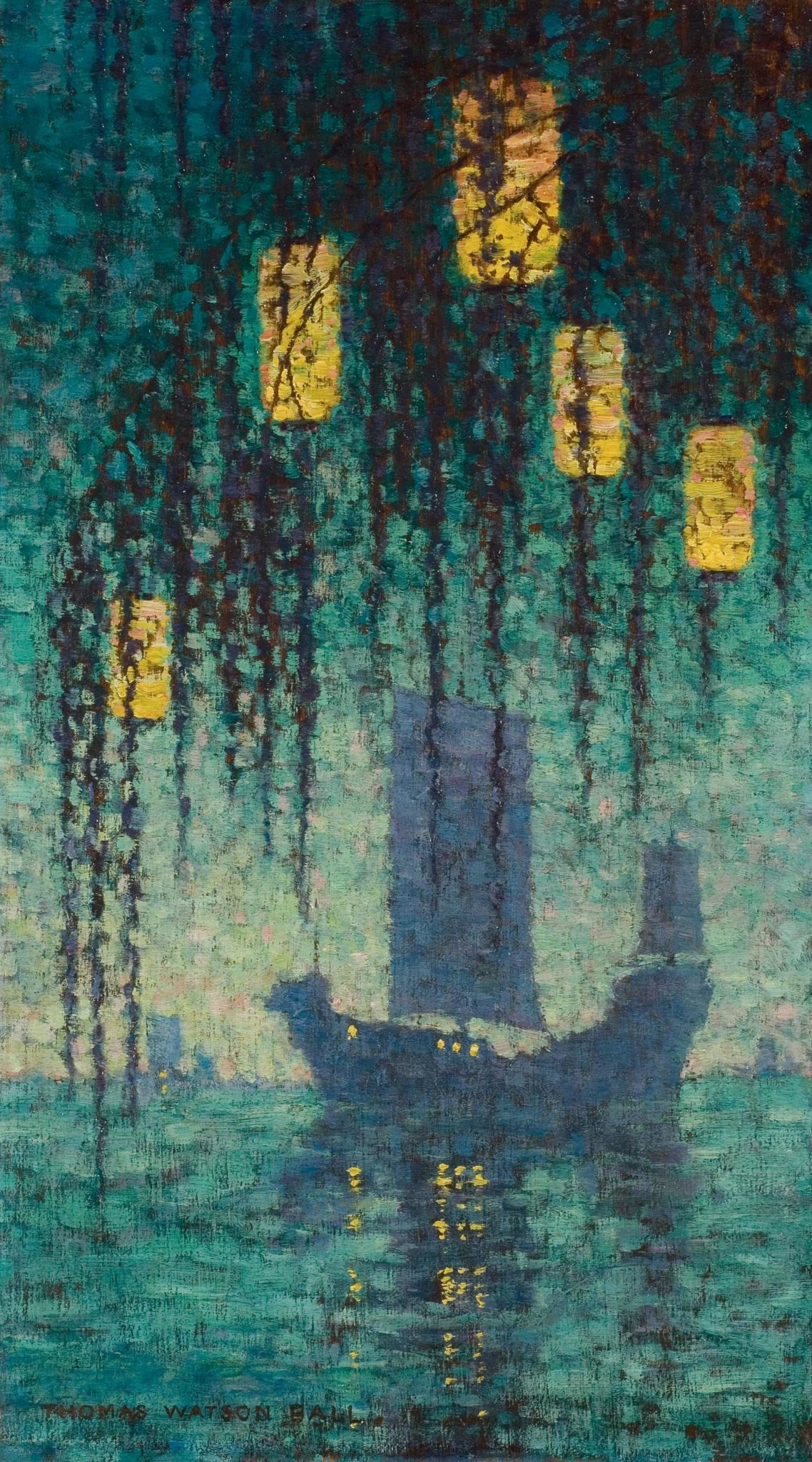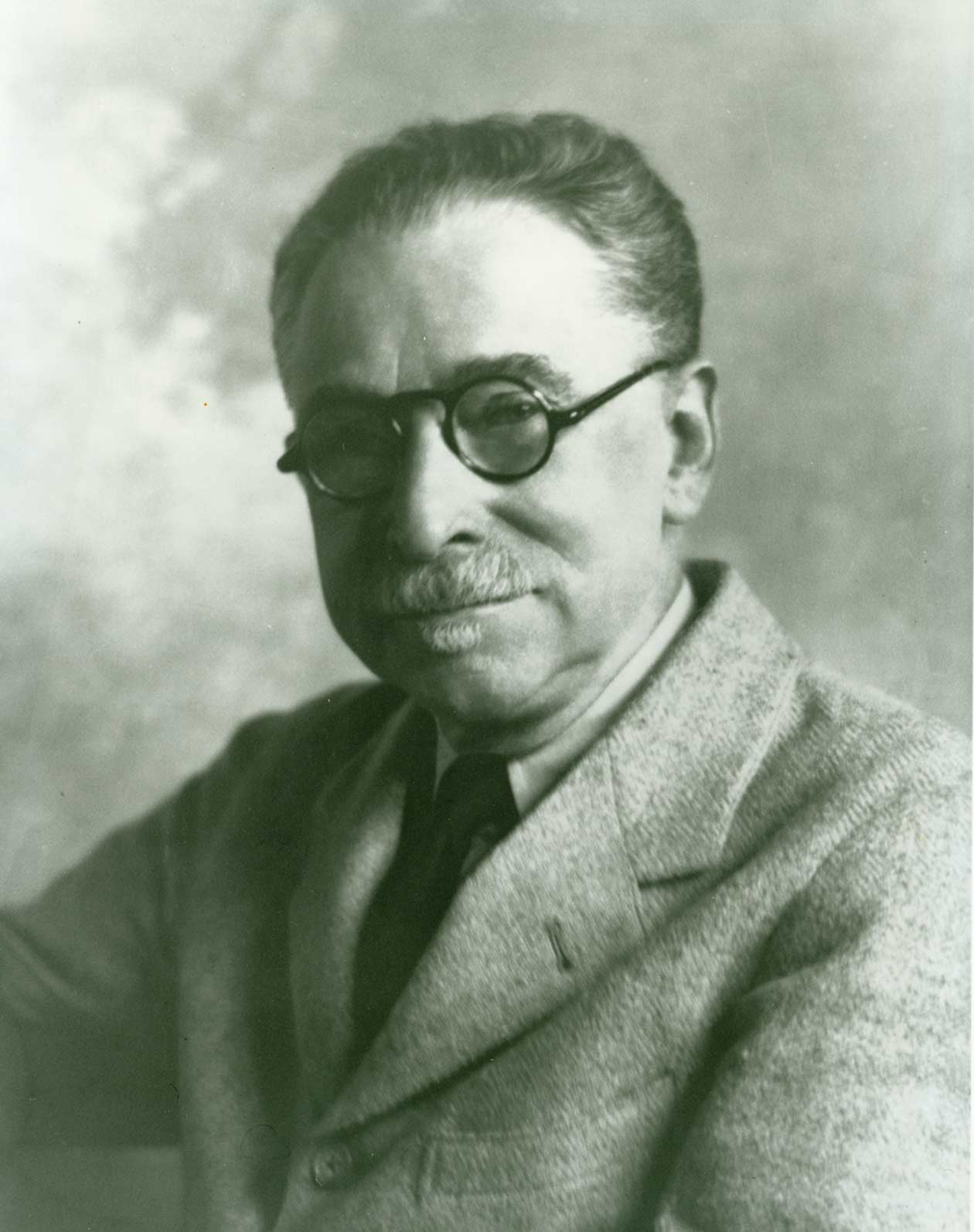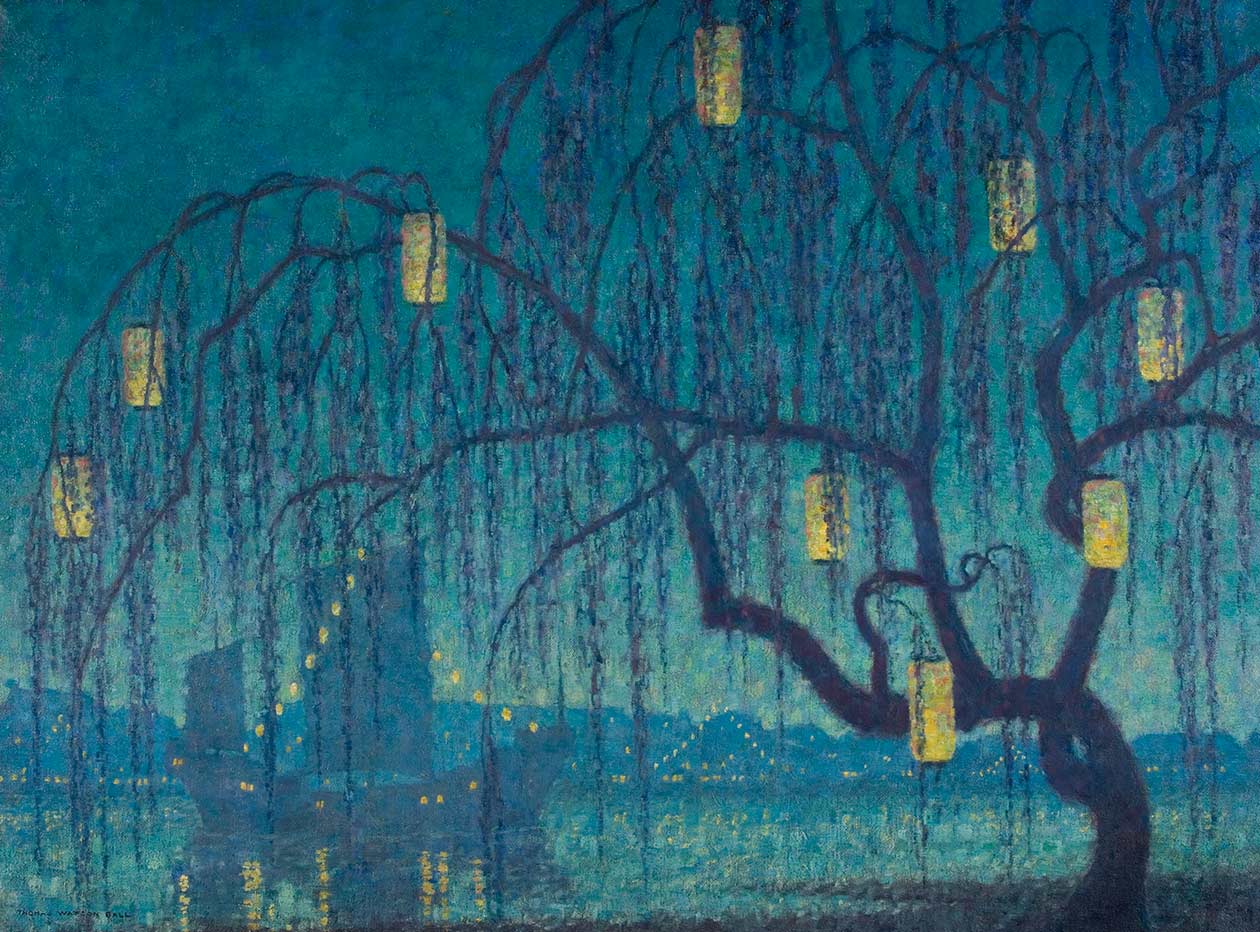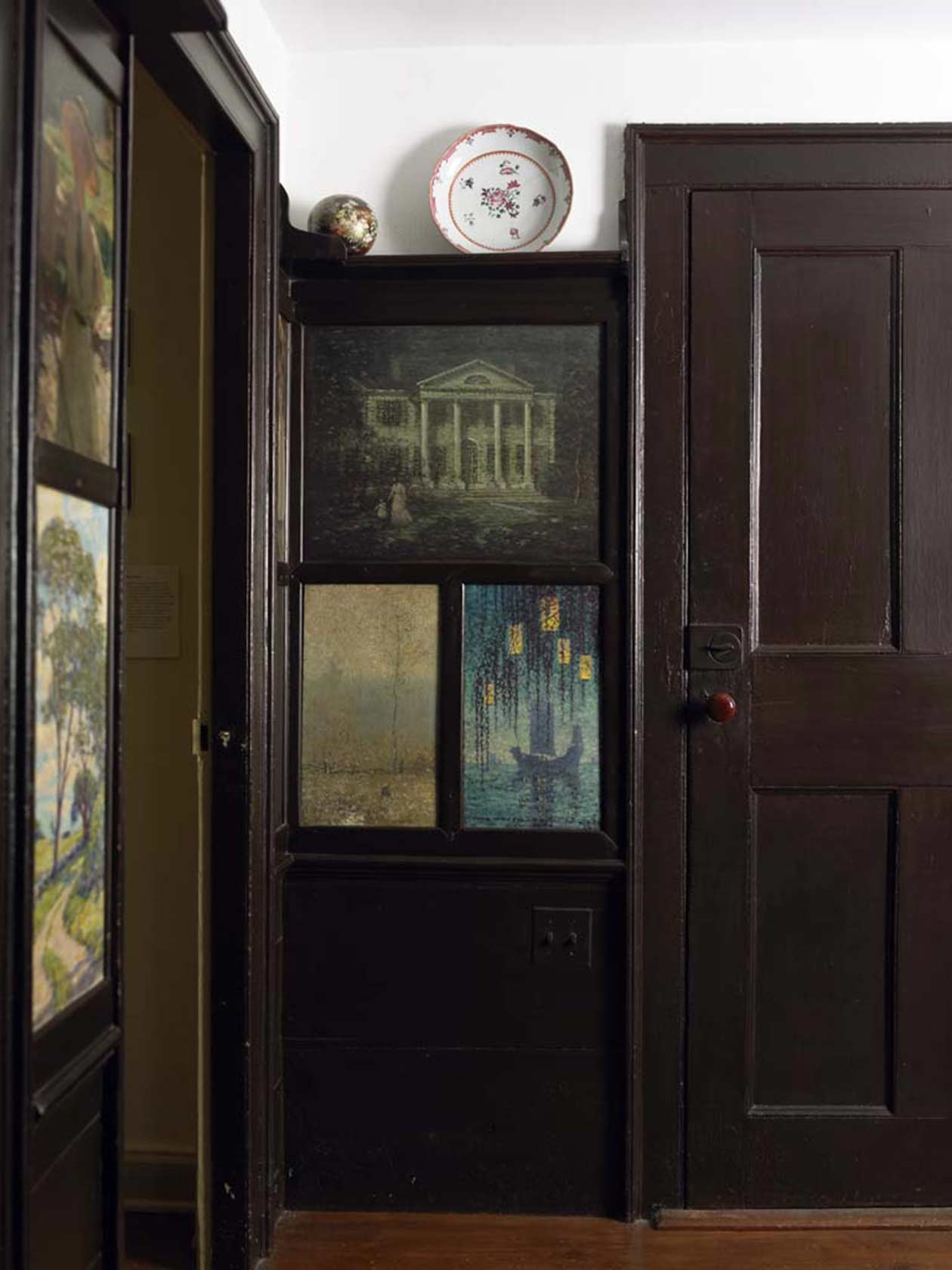Collections
In Situ: The Painted Panels
- Museum Hours: Tuesday through Sunday, 10am to 5pm
Thomas Watson Ball (1863 – 1934)
Chinese Twilight
Thomas Ball’s painting for the dining room would be equally effective as a design for a tapestry, ceramic tile, or mural. Installed below Will Howe Foote’s moonlit view of the Griswold House and next to a Bruce Crane landscape, it offers a striking contrast to them and to the other panels in the room. It replicates a painting of Ball’s that is in the collection of the Florence Griswold Museum. Ball painted sailing ships other than Chinese junks and created for them an effective illusion of three-dimensionality, but he chose in this instance to paint a flat composition with the silhouette of a sailing vessel. The darkening twilight hour is emphasized by the flickering yellow rectangles of the Chinese lanterns suspended in the willowy tree. The verticality of this work, though made emphatic by the cascade of delicate branches that spill from the tree, is picked up as well by the splashes of light from the large vessel reflected on the surface of the agitated water. The limited color palette and the stipple effect of the brushwork add to the decorative quality of this painting.
Ball usually referred to himself as a decorative painter. It is not known when he painted this panel. It could have been any time after 1913, when he first came to Old Lyme. He painted some landscapes and marines but is best known for ceiling decorations in New York City churches and for the book covers he designed for Dodd Mead and other major publishing houses. Whether he ever witnessed twilight in a Chinese sea is a question, although he did some traveling, for in 1915 he had a solo exhibition of Puerto Rican landscapes.
THOMAS WATSON BALL (1863-1934)
CHINESE TWILIGHT
OIL ON WOOD PANEL
GIFT OF THE ARTIST
After spending several summers in Old Lyme, Ball and his family moved to town to live year-round in about 1921. Ball had known some of the Old Lyme artists before coming. He had studied with Frank DuMond at the Art Students League and later lived in the same Manhattan building as Matilda Browne and Luis Mora.
From 1894-1900, Ball had been the art editor at Harper’s Magazine, where he met many artists, and, like many of the Old Lyme artists, he belonged to the National Arts Club and the Salmagundi Club, two of the most important artist groups of the era. Ball’s wife, Alice Lynde Raymond Ball, and his son, Thomas Raymond Ball, were also decorative painters.






